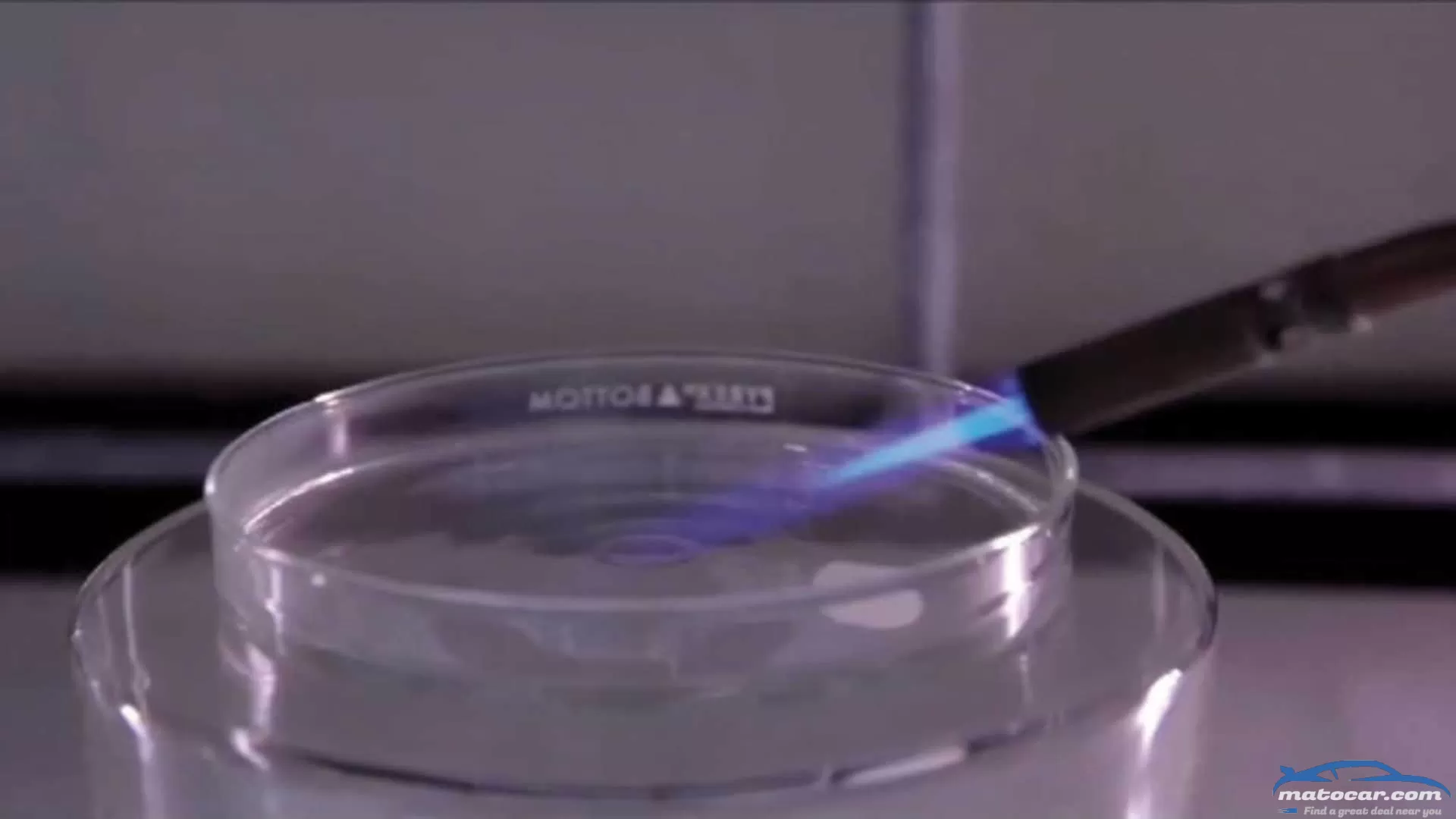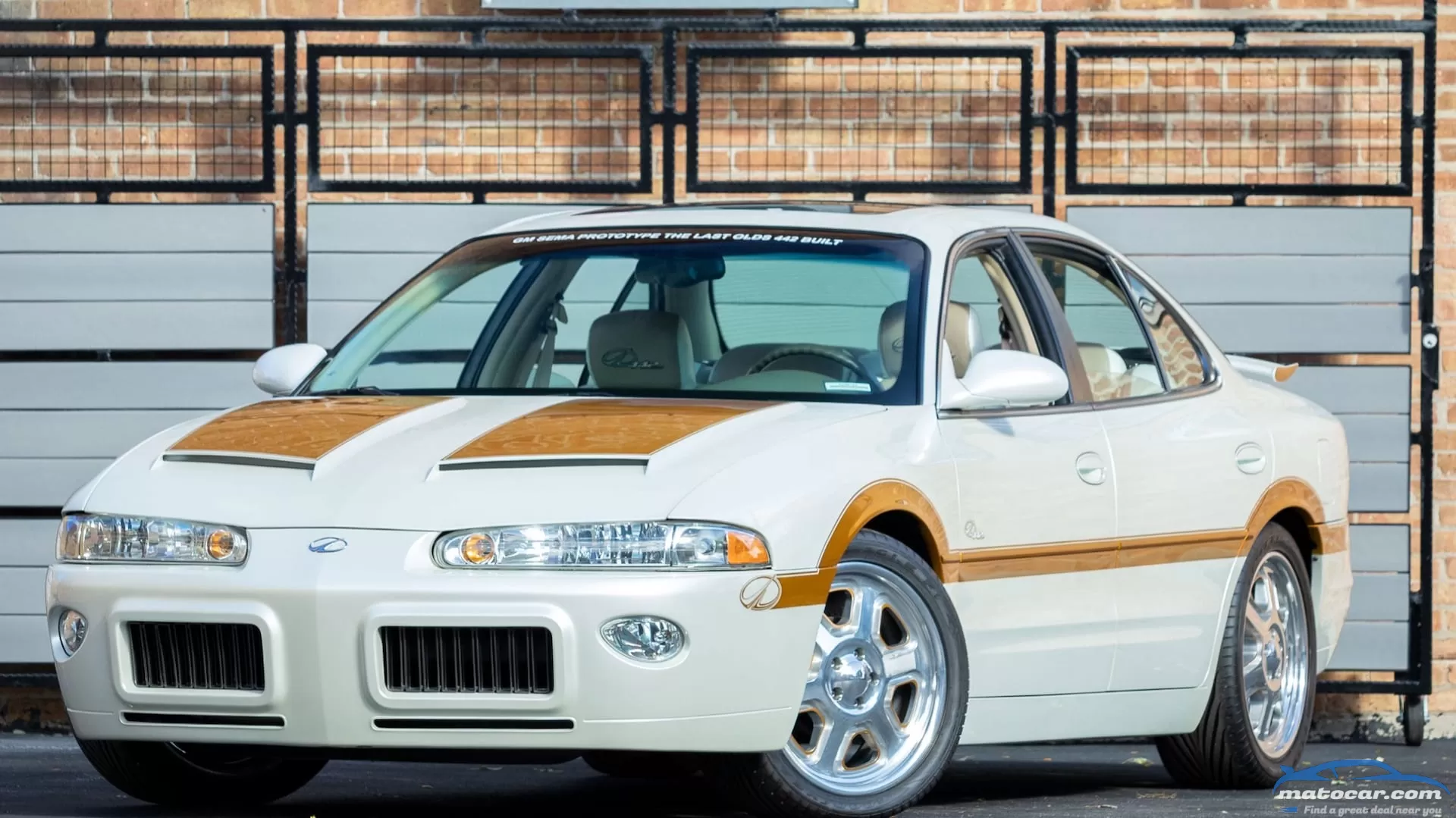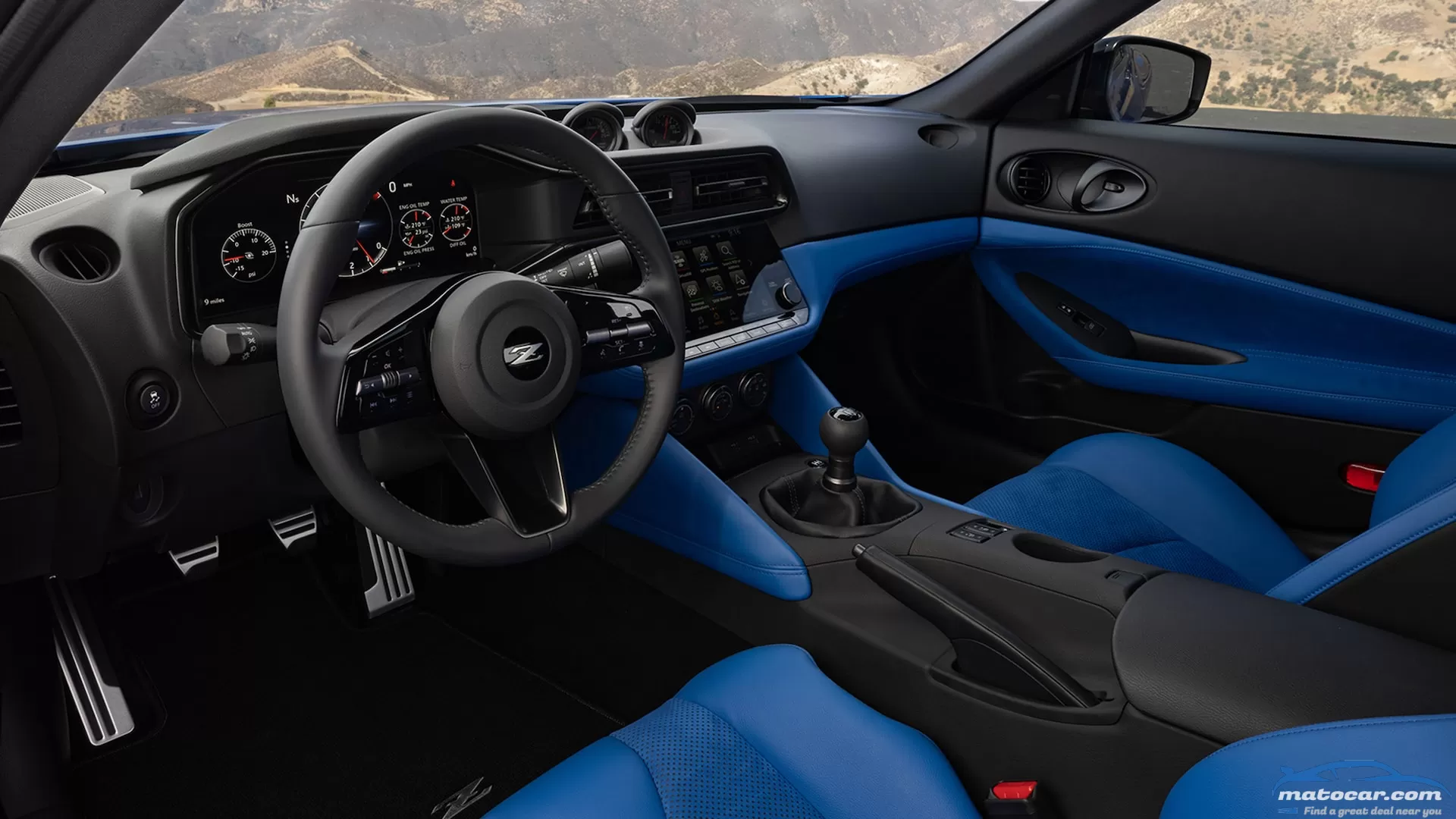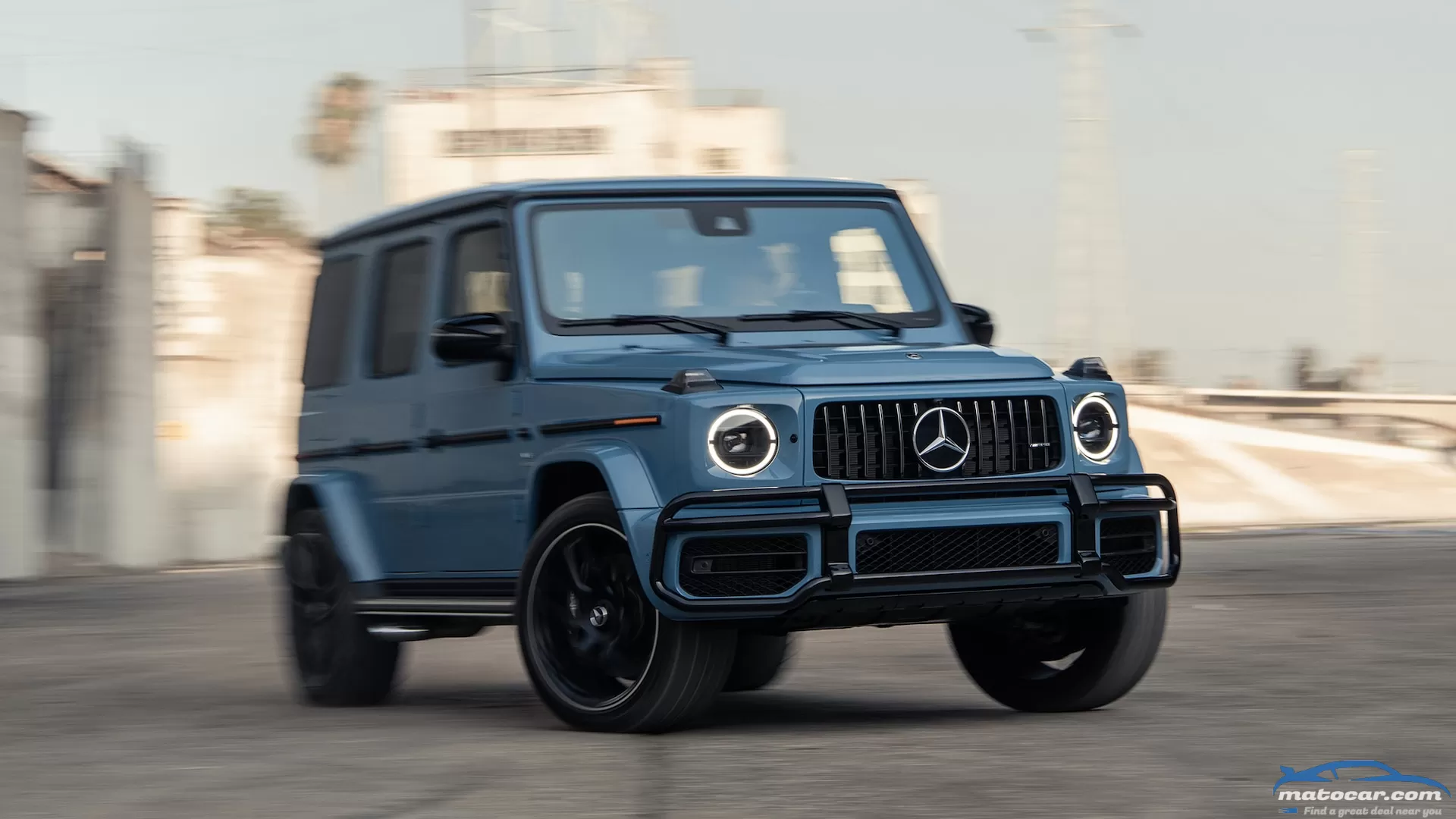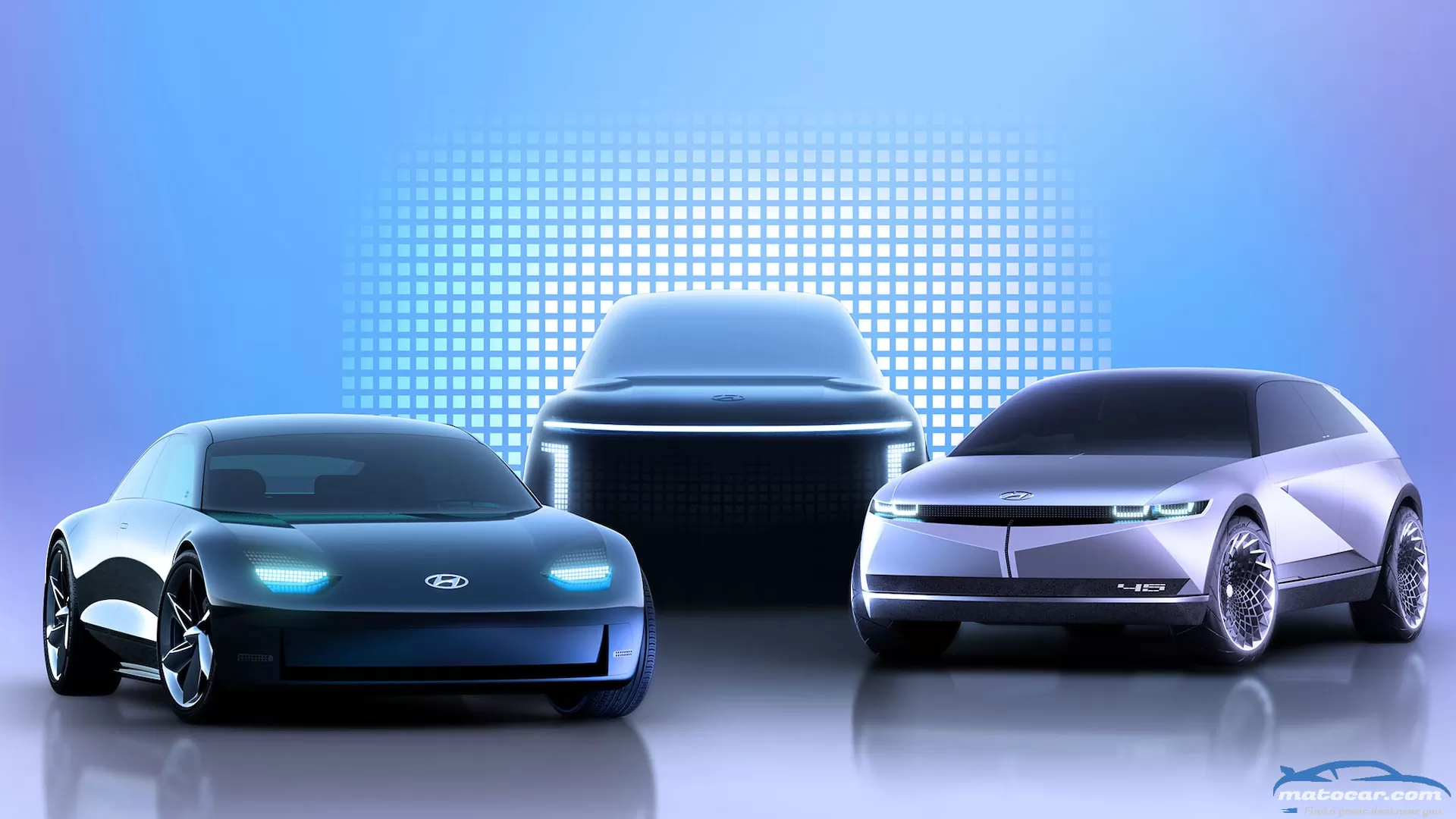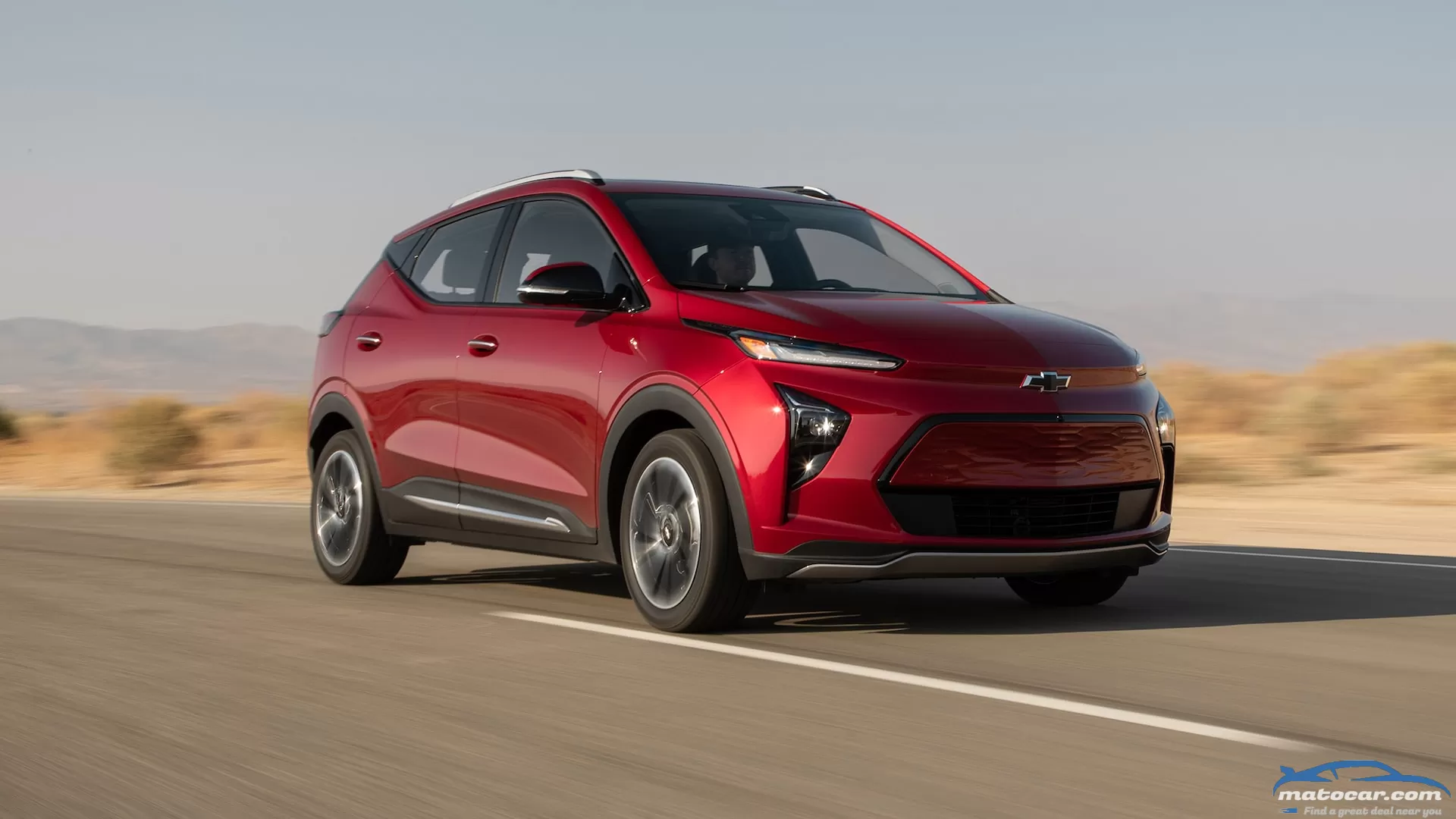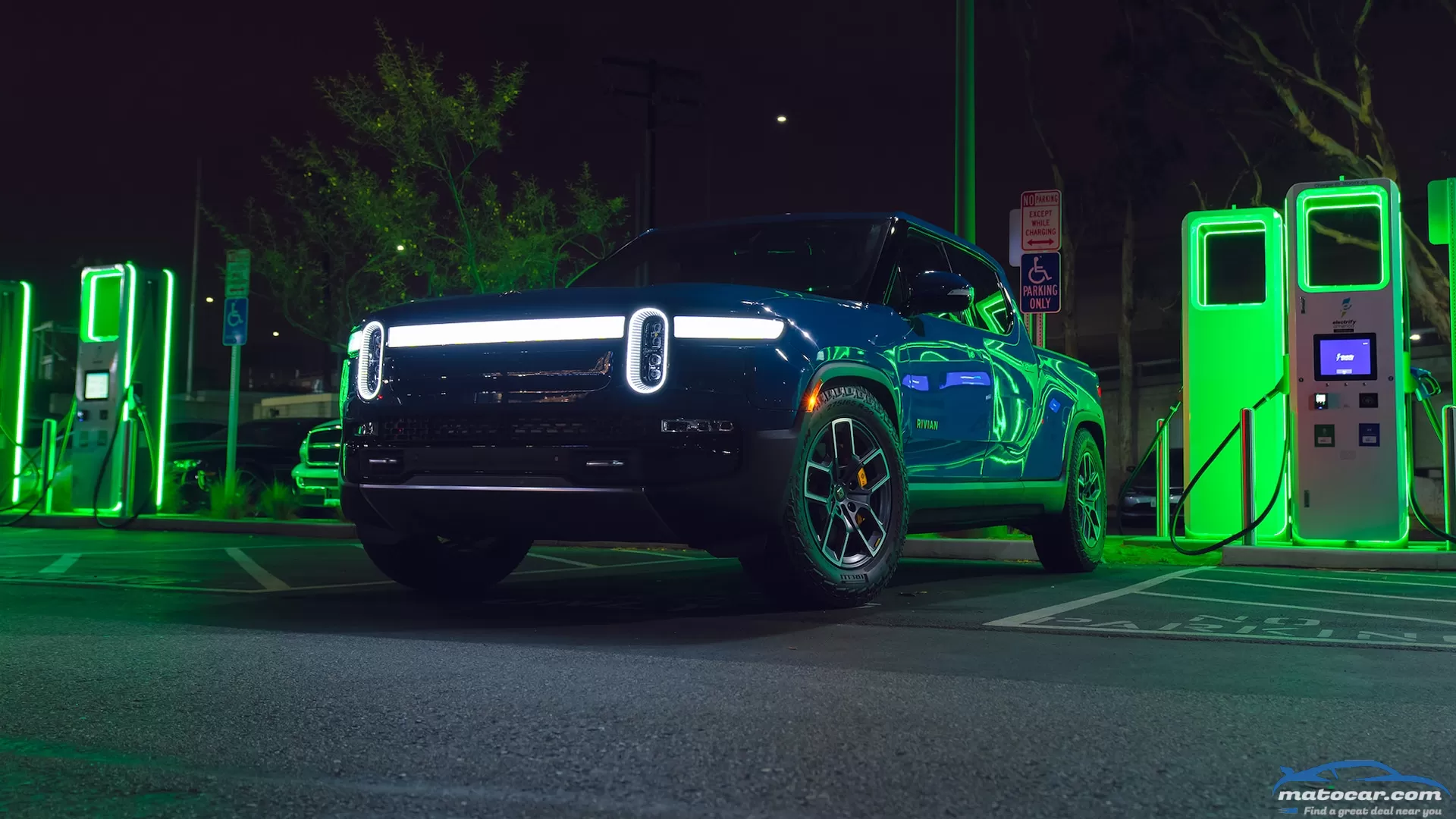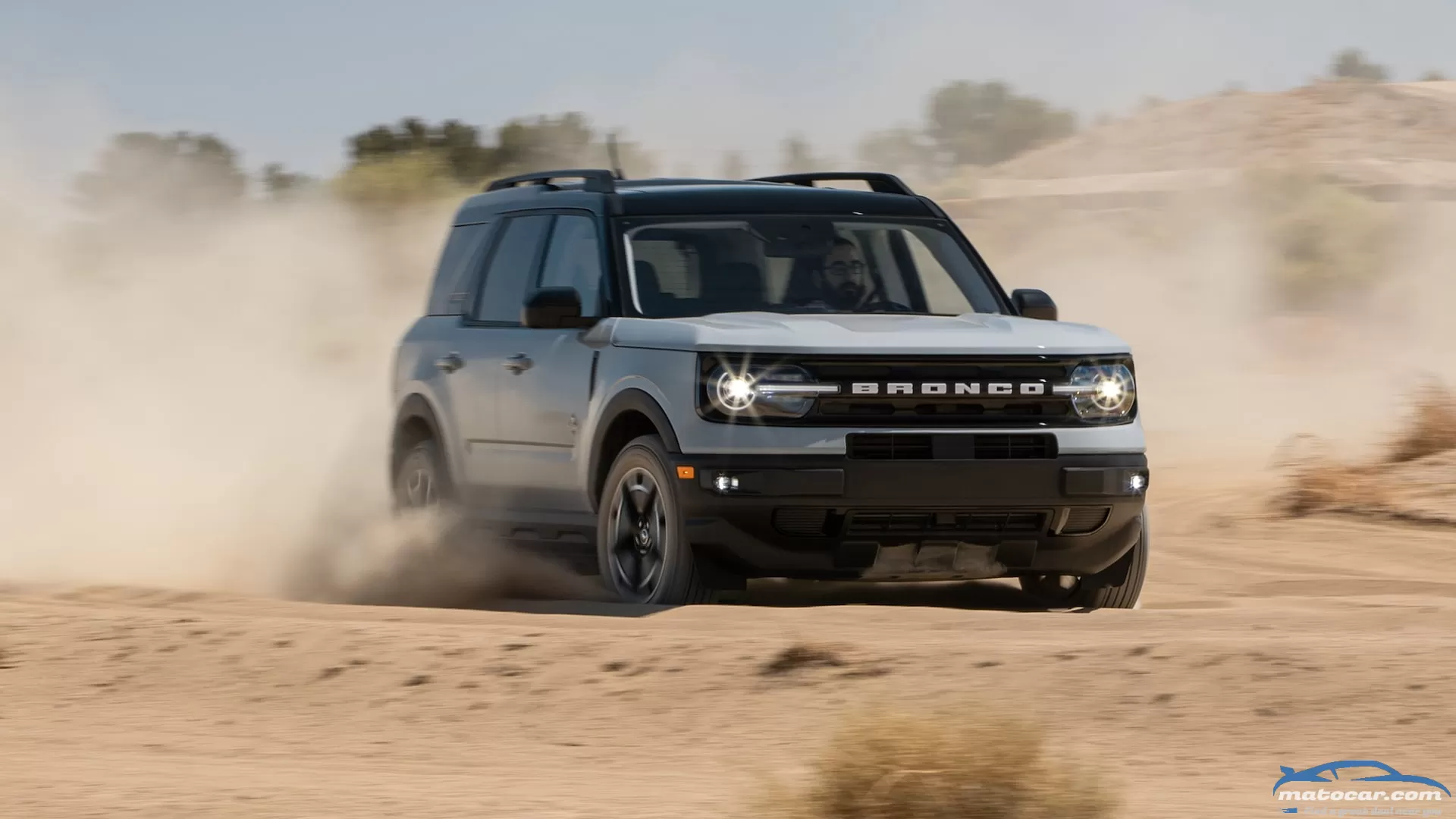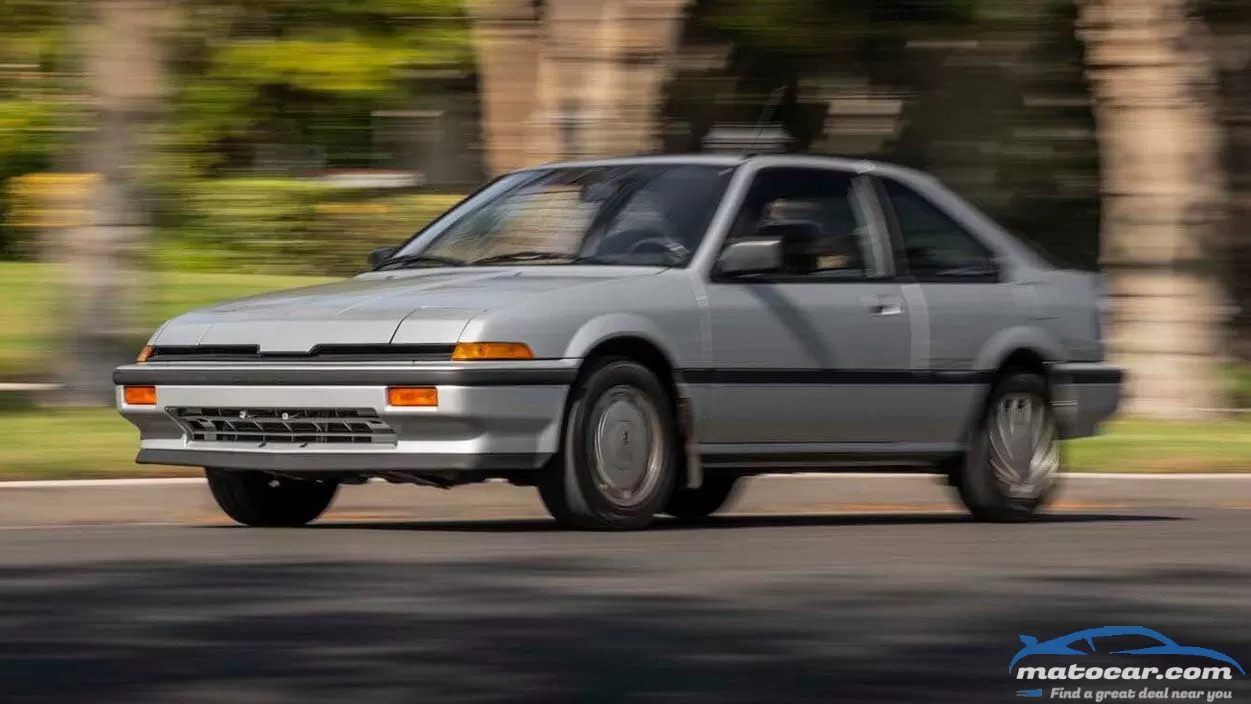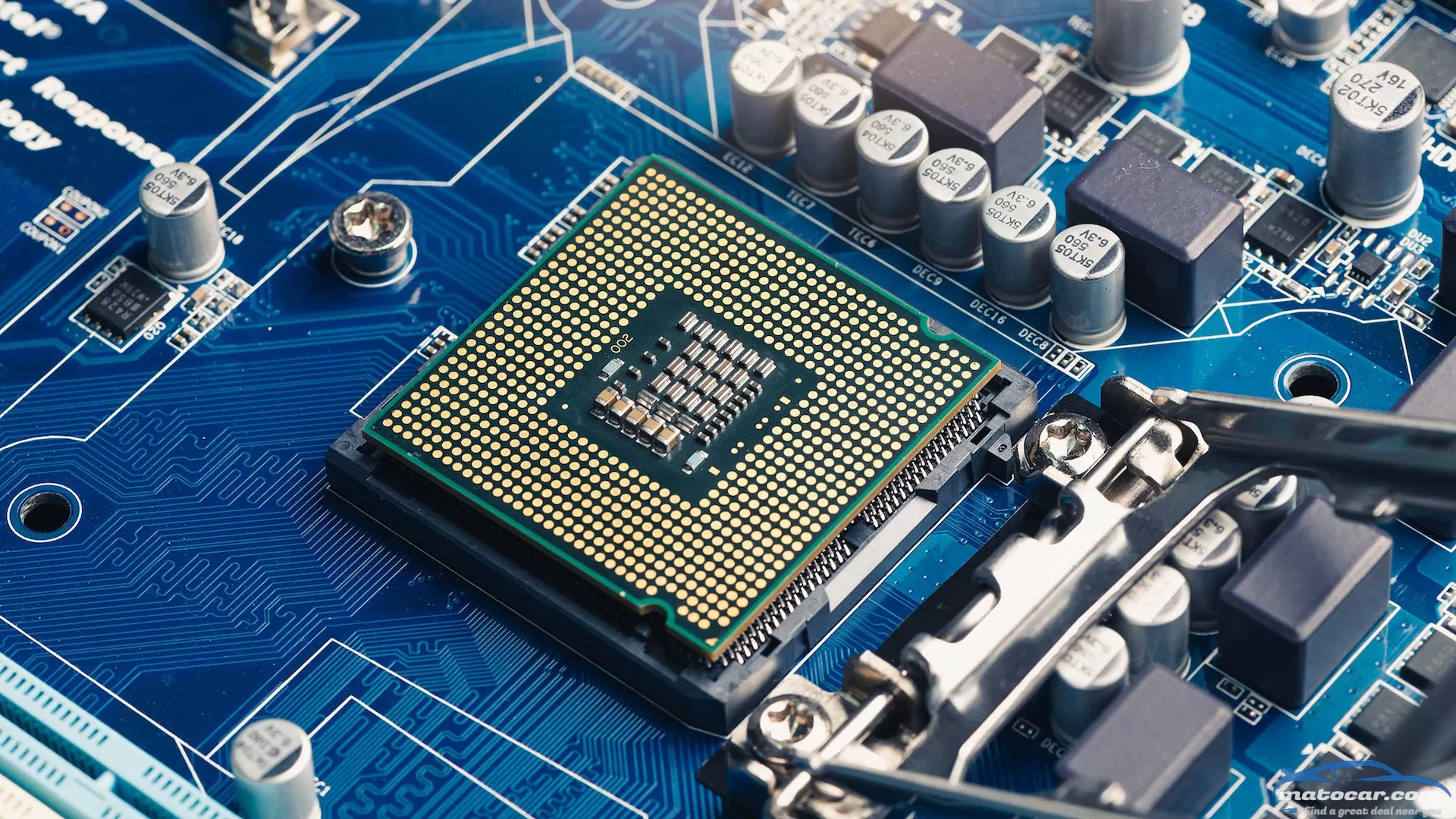The investment in automotive electrification has ramped up sharply in recent years, with new advances in battery chemistry, motor and controller technology, and charging infrastructure being announced almost weekly. We've generally spared our readers the chemistry lesson required to describe every new battery electrolyte formula to come along, but we've passed along the most novel, interesting, and promising of concepts that promise to advance electrification. Here are highlights from just the past two years.Maybe Pair Capacitors and Batteries?Chemical batteries are great at storing energy. They just can't do it extremely quickly. Capacitors can accept and release huge amounts of energy quickly but can't hold this energy for very long. Capacitors on cars aren't new—Mazda introduced its i-ELOOP energy recovery capacitor on the 2014 Mazda6 sedan. But in November 2019 we reported on a joint research effort by Lamborghini and the Massachusetts Institute of Technology, to triple the energy storage capacity of ultracapacitors, by replacing the porous activated carbon used in most capacitors with a new powder composed of metal-organic framework compounds comprising primarily of nickel, copper, and molecular carbon that effectively doubles the surface area inside the same volume/mass of powder, which is how it doubles the energy density. Research continues, and although ultracapacitors will likely never replace chemical batteries, this Lambo/MIT ultracapacitor could greatly reduce the mass of the energy-storage battery required, guaranteeing both nimble handling, ferocious acceleration, and track-worthy regenerative braking.Mine the SeafloorA perennial and legitimate argument against complete electrification is the question of ethical and environmentally sensitive sourcing of the various metals and other materials required. So in June 2020 we reported on the discovery of naturally occurring polymetallic nodules that line the Pacific Ocean's abyssal deep seafloor in the Clarion-Clipperton zone (lying roughly between Mexico and Hawaii). These potato-sized blobs are typically composed of 29.2 percent manganese, 1.3 percent nickel, 1.1 percent copper, and 0.2 percent cobalt. They form naturally and sit in the silt, where they can be fairly easily scraped up using a drag bucket of sorts. This area is recognized as the planet's largest known source of battery metals and is thought to be capable of supporting production of 280 million EVs. But the metals supply and mining industries are awaiting a green light from various organizations studying environmental impact on fisheries, etc.The State of the Solid-State BatterySolid-state batteries promise to solve myriad nasty battery problems: Liquid or gel electrolytes are flammable and can freeze, so they need costly warming, cooling, and safety monitoring. Additionally, fast charging can result in the formation of lithium metal spikes that can pierce the battery's permeable "separator," short-circuiting the cell. One downside of solid-state is that lithium formation on the anode causes the cell to physically expand, which must be accounted for in the pack design. In December 2020 we reported on California-based QuantumScape's promising new solid-state battery, which claimed to boost range by 80 percent and to function at temperatures ranging from -20 to 80 degrees C, all of which attracted a huge investment from the Volkswagen Group. In the months since, we've reported on Toyota's in-house solid-state battery program, which is likely to see production in hybrid vehicles first, and on Factorial Energy of Massachusetts inking a development deal with Hyundai-Kia, claiming its battery can boost range by 20-50 percent.Gallium-Nitride Semiconductor Chips to Speed ChargingIf the long Chipocalypse, currently still crippling auto sales as we write this, has any silver lining, it might be that as the industry tools up to produce more chips, some of that new production can be dedicated to gallium-nitride, rather than silicon-based chips. This semiconductor material, which enabled the first white LED lights and powered Blu-ray disc readers, is able to simultaneously withstand higher voltages and present a smaller resistance to electric current flow relative to either the silicon (Si) or silicon carbide (SiC) materials. Lower resistance means less heat buildup, which can allow smaller devices to deliver greater power flow and faster switching, which in the case of an EV's onboard power inverter can equate to faster charging and/or greater range. Our July 2021 coverage of Texas Instruments and Odyssey Semiconductors GaN chips noted that engineering samples were to be available in late 2021, which should mean production might commence after a few years of development."Cylinder-Deactivation" for Electric MotorsIt's hard to believe, but the same concept that boosts fuel economy of a piston engine by shutting several cylinders down and making the functioning cylinders work harder can be applied to electric motors, as well. Tula Technologies, the folks who pioneered the Dynamic Fuel Management system in use on more than a million GM trucks and SUVs, has introduced Dynamic Motor Drive. During certain high-speed light-load conditions, where electric motors are not quite as efficient, DMD pulses brief bursts of higher torque to meet the steady-state need, which conserves energy by reducing heat buildup in the rotor core and the power inverter. The power savings are minimal on mainstream permanent-magnet and AC-induction type motors, but they're significant on the cheapest synchronous reluctance motors, which are only used in industrial applications today. The technology promises to eliminate some of the noise and "torque-ripple" vibration that currently disqualifies these motors from EV use. It could also make them more efficient than AC induction and sidestep supply-chain worries inherent in permanent-magnet motors.Lower Cost Via Simplified ManufacturingThis tech story ran in conjunction with our 2022 Lucid Air Car of the Year coverage, describing the nascent Tesla Model S fighter's many innovations aimed at efficient, lower-cost manufacturing. The battery pack, for example, consists of two injection moldings. One incorporates the sides, top, and all power-delivery busbars, and the other includes the cooling plate. Because this only needs to contact the ends of each cylindrical cell, dramatically less heat-conducting glue is needed than in the radially cooled Tesla packs. The Lucid packs can be robotically assembled in a dark plant. The motor's hairpin-style square-section winding consists of just 24 individual wires that are woven for ease of assembly into the stator and the need for only 24 solder connections. And extreme downsizing of the power inverter, final drive units, and more yield impressive weight savings that pay off in cost and range improvements.Lithium-Sulfur Triple ThreatSilicon Valley battery-tech company Lyten came out of stealth in September and revealed a battery chemistry boasting triple the traditional lithium-ion batteries' energy storage per pound. That's because a sulfur atom can host two lithium ions, while a typical NMC-oxide cathode can only manage 0.5-0.7 ions. But during charging, those lithium ions sometimes bring sulfur atoms along with them when they migrate to the other electrode, and this depletes the battery. Lyten's secret is to cage each sulfur atom in one of the millions of tiny boxes afforded by their proprietary 3-D graphene sheets. And because carbon is more conductive than sulfur, power flows better than in previous lithium-sulfur batteries. The company says it has demonstrated 1,400 charge/discharge cycles (sufficient for EV use) and that it plans to select a factory site in Q1 of 2022 to support incorporation of LytCells for use in vehicles by the 2025 or 2026 model year. Most experts we spoke with find that timing to be overly optimistic, but perhaps looming local content requirements the USMCA trade agreement calls for in 2023 will inspire overtime development, as all LytCell materials are abundantly available in North America."Massless" Structural BatteriesOne way to get weight out of battery electric vehicles is to force the batteries to "multitask," by serving as part of the vehicle's structure. Raw, uncoated carbon-fiber strands are great electrical conductors, and because they typically include tiny voids that can easily accept lithium ions, they function well as a battery's negative electrode. Apply a lithium-iron-phosphate/graphene-oxide coating to said fibers, and you've got a structural cathode. Now researchers at Chalmers University of Technology in Sweden think they've found a suitable polymer electrolyte with a cross-linking monomer that enhances the material's structural rigidity while still conducting lithium ions. The team is targeting an energy density about one-third that of mono-tasking dead-weight lithium-ion. Still, studies indicate that replacing roughly 70 percent of the interior and exterior panels and 60 percent of the body structure of a Tesla Model S (85 kWh) or BMW i3 with SBC, should lower mass by 26 and 19 percent with range dropping by 36 and 17 percent, respectively. Alternatively, doubling the thickness and mass of these SBC panels to bring the cars back to mass parity should boost range by 20 percent in the Tesla and 70 percent in the BMW (while adding foot room). Cost estimates for this brand-new technology are not yet available.Lead image: Mina De La O/Getty Images
Wow, the claims Nanotech Energy makes for its new graphene battery, just presented at CES Unveiled, are impressive: It retains more than 80 percent of its rated capacity through 1,400 cycles, can charge "18 times faster than anything that is currently available on the market," maintains performance at extreme temperatures (-40 to 140 degrees F), holds charge at temperatures as high as 350 degrees and won't catch fire when penetrated with a nail or heated to more than 1,300 degrees, don't require exotic materials, can be manufactured on existing equipment in various form factors (cylindrical, pouch, etc. ), and is going to be produced in a new plant in Nevada slated to open in the fourth quarter of 2022.Given all that, we wouldn't be surprised to learn that driving an EV powered by such batteries also promoted weight loss and prevented tax audits. Here's what we know about the Nanotech Energy graphene battery.Graphene Battery ElectrodesGraphene has been making a lot of news lately, and we explained what it is here, but here's a quickie recap: the graphene in use here is a sheet of one-atom-thick carbon. Nanotech Energy is using graphene sheets to transfer energy to and from its new batteries. Graphene is extremely strong yet pliable, which makes it capable of stretching as the lithium ions come and go from the electrodes, causing volume changes. Graphene's strong electrical conductivity lowers the battery's internal resistance, which lowers internal heat generation, enabling faster charging.OrganoLyte ElectrolyteNanotech Energy has yet to release exact chemical specifications of its proprietary liquid electrolyte, but it has provided MotorTrend with some general information. Most electrolytes in use today involve dissolving a lithium salt in a liquid material composed primarily of linear and cyclic chain carbonates (molecules that involve a carbon atom attached to three oxygen atoms). These liquids are typically flammable (see the photo below). OrganoLyte reportedly is not, if photos (at top) of a propane torch applied to the material are to be believed.While no specifics have been confirmed, the name suggests the material still centers around organic chemistry (meaning its molecules involve carbon atoms and covalent bonding, not ecological farming), and we're assured they're not exotic or expensive.New Proprietary SeparatorThe graphene battery electrodes must be separated by a material through which the ions transfer, and here again Nanotech Energy has replaced the typical polyolefin separator with a new material that improves on polyolefin's thermal stability. This also helps to make the batteries safer.Easy to ManufactureCurrent manufacturing equipment and processes currently in use to make lithium-ion pouch and cylinder batteries can produce Nanotech Energy's graphene battery, and a factory designed to build them is currently slated to open in late 2022.When Can I Buy a Graphene Battery?Perhaps as early as next year, but we expect initial production to concentrate on the consumer electronics market. That's because it's extremely unlikely that sufficient durability, reliability and safety testing on all these new materials when applied toward an automotive use case can be completed in less than a few years.
There's a rather oddball car coming up for sale at the upcoming Mecum auction, and we genuinely can't decide if it's awesome or awful: a 1999 SEMA show car built by General Motors as the Oldsmobile Intrigue 442.For those unfamiliar, the 4-4-2 is, or at least was, an institution as Oldsmobile. First introduced in 1964 in response to Pontiac's GTO—this was at a time when GM brands were competing with each other—the Cutlass-based 4-4-2 offered a beefed-up chassis, bigger brakes, and a 330-cubic-inch (5.4-liter) V-8 souped up to 310 horsepower. The 4-4-2 designation indicated a four-barrel carburetor, four-speed manual transmission, and dual exhausts. (The designation stuck even after Olds started selling 4-4-2s with two-speed automatics.) The 4-4-2 was a huge hit, and despite the collapse of the muscle car market and the onset of the Malaise Era, Olds delivered a 4-4-2 every year through 1980.Aside from a one-year revival in '85 (when Olds applied the name to the '83-84 Hurst Olds, itself a credible companion to Chevy's Monte Carlo SS and Buick's Grand National), there were no 4-4-2s in the '80s, but in 1990 the name reappeared in the most unlikely of places: Oldsmobile's aging Calais. The oft-forgotten (and now dehyphenated) Calais 442 version featured the high-output Quad 4 engine, GM's first serious attempt at a modern 16-valve DOHC I-4. Oldsmobile said the designation stood for four cylinders, four valves per cylinder and two camshafts, which was still pretty hot stuff at the time.Turns out the "2" also stood for how many years this model lasted. When the even more forgettable Achieva replaced the Calais for '92, Olds turned its back on yesterday, naming the equally unsuccessful performance version SCX. And that was it for the 442—until the 1999 SEMA Show, when this strange little gem appeared. Oldsmobile was trying to imbue its dull-as-paper Intrigue with some actual intrigue, so it stuffed a 550-hp Cadillac Northstar V-8 under the hood.Let us repeat that salient detail, lest it escape you. Olds, in the throes of General Motors' dullest days, right smack dab in the middle of creating some of the most forgettable cars in the corporation's then-90-year history, put a 550-hp Northstar V-8 in an Intrigue.That sentence is truly magnificent, at least until you get to the last word.That's why we can't decide of the Intrigue is awesome or awful. The Northstar's shine had begun to dull by the end of the '90s, but it was a good, smooth-running engine (the antithesis of the Quad 4!), and 550 hp is nothing to sneeze at, even if it was delivered through the front wheels. The Intrigue was a semi-credible sedan that Oldsmobile less credibly tried to sell as a luxury/performance car. In reality, our own testing found that it rivaled the Toyota Camry for both road manners and anonymity. There is a reason the Oldsmobile Intrigue is not the stuff of car shows.We can't decide if the Intrigue 442's details are cool or crud. There's the white-and-gold paint, a nod to the Hurst/Olds versions of the 4-4-2 that appeared sporadically throughout the '60s, '70s, and '80s. But the application of the old trim—as a stripe bracketed between gold renditions of Oldsmobile's anonymous new logo—is clumsy. The twin-scoop hood is cool, but the gills on the front bumper look like room vents bought at Home Depot. (They are apparently actual grille inserts from a 1970 4-4-2, which just goes to show that real estate agents are right: Location is everything.) And those wheels—Hellooooo, Y2k!We can't imagine what this thing is like to drive; the torque steer must be epic. Nor will we know if GM ever planned to turn this one-off into a production car, because in December 2000, GM abruptly announced its plans to shutter the Oldsmobile brand. Development on new products stopped, the Intrigue was killed after 2002, and by the end of 2004, the historic brand was itself history.And that is what makes this strange muscle car so intriguing—the last factory-produced 4-4-2 is a genuine GM-built piece of what might have been. The auction page doesn't tell us a whole lot about this car, but it looks clean and largely original, and it's selling with no reserve. If you buy it—and by all means, you should buy it—will you take us for a ride? Please?
As you're probably aware, there's an ever-diminishing roster of cars available with a manual transmission. But that doesn't mean there aren't still choices. While manual cars no longer can be counted on to save money at the gas pump—today's automatics are generally more efficient—for a certain subset of the population, including many of us here at MotorTrend, there's nothing like a car, truck, or SUV with three pedals.Among the changes to this list for 2022, the sole entrant from Lotus has sailed into the sunset, while a renewed sports car by Nissan joins the analog squad. In 2021 we also said au revoir to the iconic VW Golf, at least here in America. The workaday Hyundai Veloster got the axe and now only exists in N form, and Aston Martin has decided to kill the manual from its upcoming lineup. Finally, the Genesis G70, Hyundai Accent, and Kia Soul have also parted ways with the manual transmission for the 2022 model year. But there are still holdouts, thank goodness; read on to find out where you can still exercise your left foot.
mercedes-benz g-class Full OverviewMastery. It's exceedingly rare, though I've seen it with my own eyes a few times. Caught an Alfred Ladzekpo drum solo once. Front-row seats at a Johnny Cash concert a quarter of a century ago. Performances that transcended what feels possible and ascended to the realm of the magical. But what does any of this have to do with a China Blue 2021 Mercedes-AMG G63?I've driven more cars than I can count all over Los Angeles. None has received a more positive reaction. Human beings seemed to be universally smitten with this China Blue G. Some degree of mastery is needed to achieve so much positive feedback. But can this softly leathered, pastel blue G-wagen be a masterpiece when it's a universe away from its not-so-humble origins? Initially conceived by the Shah of Iran as a military vehicle, the G has transcended every definition and categorization car marketers can think of. Remember, Mercedes was done with the G-Class back around 2007, and the GL (now the GLS) was supposed to replace the icon. Didn't quite work out that way. A quickie Google just showed me a 2021 G63 with an MSRP of $190K and 1,100 miles on the clock on sale for $340,000. What other vehicle on earth does that?After spending 72 hours with this particular G and contemplating how the concept of mastery applies to it, what can I say? What can I add to the conversation about an SUV that's literally selling for $150K over sticker, used? A little bit, I hope.The G63 would be better as an EV. Here come the slings and the arrows, I know, but hear me out. Yes, the twin side pipes make an awesome noise. Only AMG could have figured out a way to make twin-turbocharged V-8s sound this deeply angry, and the short-piped G might be the loudest and most brutal of them all. However, the EPA estimations for this 5,784-pound solid steel wildebeest are 12/16/14 mpg—terrible, and that I barely cracked 10 mpg was even worse. I'd like to leave my son a world worth inheriting, and if this G were an EV, it would ever so slightly help move us toward that goal.Nearly three tons of China Blue fun is already heavy, and going electric would obviously make the thing even heavier. How heavy are we talking? The downright amazing Rivian R1T weighs about 7,150 pounds, and that's a bit more than the 6,750 pounds I bet an EV G would clock in at. The Rivian has four motors, while the the Mercedes-EQ EQS580 has but two. But even if the upcoming EQG580 (Mercedes' lousy nomenclature, not mine) weighs more than the Rivian, its efficiency will likely more than quadruple, as the R1T is EPA-rated at 74/66/70 mpg-e. That's, frankly, huge.An electric G would probably be quicker, too. Not that the current car is a slouch. Our test SUV hit 60 mph in a quick but not otherworldly 3.9 seconds. Does the 577-hp G63 have any real competition? Not really, and that's part of what makes it such an icon. The 5,122-pound Jeep Wrangler 392 with a 470-hp V-8 hits 60 mph in 4.2 seconds, whereas the 835-hp Rivian R1T does so in 3.1 seconds (or 3.2 with off-road tires).The G63's quarter-mile time is 12.5 seconds at 109.9 mph, which is respectable for a brick. Nearly as bricklike, the 392 is on the G's heels with a 12.9-second run, though its trap speed is just 100.4 mph. That Rivian truck? It initially smokes the AMG with an 11.6-second blast down the quarter (or 11.7 on the off-road meats). But note the R1T's trap speed: just 110.8 mph. Looks like the Rivian's accelerative advantage is over after 1,320 feet.As for braking, it took AMG two years after the G63 launched in 2019 to come up with 20-inch wheels that would fit over its massive rotors. China Blue here rode around on 22s. Braking from 60 mph took 116 feet, which is neither great nor bad. Pretty average for a passenger vehicle, actually. The Wrangler 392 takes a spooky 133 feet (though, sadly, that's decent for a Jeep Wrangler), whereas the R1T stops from 60 mph in an even worse 135 feet. Let's hear it for those 14.8-inch front/13-inch rear rotors.Around our figure-eight test track, the G63 pogoed its way around in 26.8 seconds, exactly as quickly as a Mini Cooper S Convertible. Not quite sure what that means. The Jeep 392 turned in an embarrassing 29.3-second performance. For various reasons, we have yet to figure-eight a Rivian, but we will. That said, heavy pickup trucks tend to perform poorly in that particular test.Aside from the dreadful fuel economy numbers and a comically expensive barrier to entry—this example stickers at $180,150, before dealers add on their cruel market adjustments—is there anything not to love about the 2021 G63? No, I can't think of anything. It's perfectly sized (about the same as a Wrangler Unlimited and four-door Ford Bronco), and around town, it's just a joy to drive. Especially if your idea of joy is imperious, effortless cruising that makes you feel like a master of the universe. To use the parlance of our times, G-Wagens just hit different.I've heard some rumblings about Mercedes' impressive MBUX touchscreen system being unavailable (yet) on G-Wagens, including from a friend I partially strong-armed into buying a G550. But he's since recanted, telling me, "I like the scroll wheel better than a touchscreen, and there are no fingerprints all over the place."Like most owners, he'll never take his G off-road. However, I have no such scruples, and I took a different G63 equipped with the new AMG Trail package on some pretty treacherous trails, and the luxo-truck performed admirably. Scraped its chin a few times, but that's nothing a 1-inch lift wouldn't solve.Are we talking about an automotive masterpiece? I wager we are. The 2021 AMG G63 is as close to the mythical notion of perfection as a vehicle is likely to get. Others playing on this elevated field? The Porsche 911. That's kinda it.Here's what I mean: If the excellent Honda Accord went out of production tomorrow, I'd be miffed, but a dozen competitors would eagerly step in to take its place. Did anyone lose sleep over the death of the Ford Fusion?Like Mercedes with the G-Wagen, there was a time when Porsche actively tried to kill off the 911. But exactly like Mercedes and the Geländewagen, Porsche just couldn't do it. Irreplaceable? Essentially. What both Stuttgart-based manufacturers figured out is that the world would be worse off if their icons weren't in it. If that doesn't make a machine a masterpiece, I don't know what does.Looks good! More details?SPECIFICATIONS 2021 Mercedes-AMG G63 BASE PRICE $157,500 PRICE AS TESTED $180,150 VEHICLE LAYOUT Front-engine, 4WD, 5-pass, 4-door SUV ENGINE 4.0L/577-hp/627-lb-ft twin-turbo DOHC 32-valve V-8 TRANSMISSION 9-speed automatic CURB WEIGHT (F/R DIST) 5,784 lb (54/46%) WHEELBASE 113.8 in LENGTH x WIDTH x HEIGHT 191.9 x 79.3 x 77.4 in 0-60 MPH 3.9 sec QUARTER MILE 12.5 sec @ 109.9 mph BRAKING, 60-0 MPH 116 ft LATERAL ACCELERATION 0.78 g (avg) MT FIGURE EIGHT 26.8 sec @ 0.68 g (avg) EPA CITY/HWY/COMB FUEL ECON 13/16/14 mpg ENERGY CONS, CITY/HWY 259/211 kWh/100 miles CO2 EMISSIONS, COMB 1.37 lb/mile Show All
Earlier this year, whispers and rumors of Hyundai execs putting a halt to any internal combustion engine development were floating throughout the web and, as of this month, it looks like those weren't just rumors.Shuffling the DeckA thorough reorganization at its Namyang Research Institute took place a few weeks ago, according to Business Korea and The Korea Economic Daily, and with it comes some significant changes. Namely, the Powertrain Team has been converted to the Electrification Development Team that will delve into all things EV, including research and development for future Hyundai products.In addition, the Engine Development Center has been shuttered, and the Battery Development Center takes its place. Its mission is to focus solely on electrification from here on out.More mixing and matching in the shake up saw the Integrated Product Development Team join forces with the Project Management Team, the result of which will oversee mass production, design, and more through each of the automaker's vehicle levels. With 12,000 R&D employees based at the Namyang Research Institute, the changes affect much of the staff.A Running StartHyundai's latest series of moves toward a fully electrified future shouldn't come as any shock, as we recently reported on the Ioniq 5's 2021 release and the upcoming Ioniq 7 SUV that's inching closer to production. The reorg becoming official might raise a few eyebrows, though, at least for those who haven't come to terms with the idea of a world without internal combustion engine options at local dealerships. Then again, Hyundai's current lineup of internal combustion engines are advanced and could serve the fleet for a long time, making the need for new development less critical during the transition to EVs.With 2022 just a few days away, Hyundai's New Year plans are prodigious. The group promises to unveil a new electric vehicle model every single year for the foreseeable future.
With only a teasing picture and a brief sentence, Subaru shows its electrified future isn't just EV SUVs like the Solterra. The Japanese brand isn't backing down from making enthusiast-centric, high-performance vehicles like the 2022 Subaru WRX STI in the EV era, and this new concept for the 2022 Tokyo Auto Salon—the STI E-RA—is proof of that.The Electric EraThe announcement of this car is just a single sentence, "STI is showcasing the STI E-RA Concept developed in a new project launched with an aim of gaining experience and practice in new technologies in the world of motorsport which is making its way toward a carbon neutral era." Unfortunately, besides the picture above, Subaru hasn't said exactly what this "practice" vehicle will end up being. However, with "RA" in its name, we have some ideas or at least some hopes.An Electrified Record Attempt?Type RA cars have always been "Record Attempt" vehicles made to push what Subaru could produce beyond the "regular" STI models. The original RA, a Legacy, set an FIA World Speed Endurance Record in 1989, and subsequent RAs were meant for running hard on the Nordschleife, attacking the typically motorcycle-only Isle of Man course, or time attack competition. Most likely, that's what this E-RA will set to do: break or set new records for electric vehicle lap times.Our SpeculationFrom the looks of the teaser image, it looks a lot like the front end of the Toyota Sports EV concept that debuted and could become the next platform shared by the two companies. It's not hard to imagine how the two companies might visually distinguish heavily related products, having plenty of experience with the BRZ and its Scion and Toyota siblings. But unlike the BRZ, this STI E-RA could pack the companies signature all-wheel-drive drivetrain, because it's an easy task to run a dual traction motor setup with one in the front and one in the rear. Or perhaps a quad-motor setup could be utilized, for the ultimate in performance torque vectoring.Which also leads us to wonder if Subaru might leverage solid state battery tech developed by Toyota, the next holy grail of electric technology. Toyota has been working on solid-state batteries for some time, and it would make sense from an economy of scale standpoint to utilize it in as many vehicles as possible, especially space-constrained and weight-conscious sports cars.Of course, all of this speculation could be blown out the window depending on what shows up at the 2022 Tokyo Auto Salon. It could end up being the next SVX, a grand tourer with a modern lightweight glass roof, or even be a callback to the least remembered XT6. We'll just have to wait and see.
chevrolet bolt-euv Full OverviewWhen Chevrolet first introduced the Bolt EV, it sent shockwaves through the automotive industry as the first properly affordable mainstream electric car. More than half a decade later, Chevy has taken its award-winning hatchback (it took home the 2017 MotorTrend Car of the Year award) and spun off a second model, the stretched Bolt EUV crossover. We put the 2022 Chevrolet Bolt EUV to the test to see if it could recapture the original's magic.Disappointing Dynamics At a glance the Bolt EUV doesn't look all that different from its smaller sibling, though it drives like an entirely different vehicle. It wears a similar grille and retains the Bolt EV's egglike styling. However, the 2022 Chevy Bolt EUV is 0.2 inch taller and wider and 6.3 inches longer than the regular Bolt. It's 90 pounds heavier, too.The Bolt EUV develops 200 hp and 266 lb-ft of torque, which it sends through the front wheels. Range is 247 miles on a full charge, 12 miles less than the Bolt EV. Chevy claims the Bolt EUV can regain 95 miles of range in 30 minutes depending on how much charge is already in its 65-kWh battery, which seemed to be a realistic assertion based on our lunchtime top-off after three laps of our Car of the Year test loop.Although the Bolt EUV's throttle mapping is good, it's easy to roast the tires at a whim, as its economy-minded rubber provides little grip off the line or even at moderate speeds if the driver dabs the accelerator too hard. We managed a 0-60-mph sprint of 6.7 seconds, which is quick but not as quick as the car feels from the driver's seat. Brake pedal tuning is excellent for an electric vehicle, as it feels completely natural and predictable. However, despite having a lot of the ingredients that make a car fun to drive, they don't come together in a cohesive way.On our test route, we found the Bolt EUV to have substandard body control and rough suspension tuning. In fact, the rear torsion bar banged so hard over train tracks that it sounded like something broke (it didn't). "This was one of the most poorly behaved vehicles driven over these surfaces," MotorTrend technical director Frank Markus said. "Lots of harshness, lots of bottoming and topping of the suspension." It's not all bad news, however, as the Chevy's steering stood out as one of the car's best aspects; it offered good engagement and ample feedback.On open stretches of highway and around town, the 2022 Chevrolet Bolt EUV was a bit more pleasant due to its low-end torque and excellent battery-regeneration features. The EV offers one-pedal driving with the push of a button, allowing it to use regenerative braking. It's a remarkably intuitive system and brings the Bolt EUV down from speed with firm stopping power without jarring the vehicle's occupants. The neat regeneration paddle on the steering wheel is still present, allowing for firm but controlled deceleration that feeds electricity back into the battery. Although it's not the most entertaining car to drive on back roads, these features are as amusing as they are useful.Creature ComfortsThe interior, though an improvement over the original Bolt EV's cockpit in terms of materials and layout, still feels at least half a decade old. It also looks like it's at least half a generation older than the other electric crossovers it competes with. That's because of Chevy's pervasive use of hard plastics throughout the cabin, though our test car featured sweet-looking blue seats and door pocket inserts that made it appear a bit more premium. Ventilated seats were also a huge win, seeing as we conducted our testing under the hot desert sun.There's plenty of space up front with 44.3 inches of legroom, and most rear passengers will have room to stretch out a bit with 39.2 inches. Although the Bolt EUV is a wagonoid crossover, its trunk space is limited with just 16.3 cubic feet of capacity behind the rear seats. That's pitiful compared to the Ford Mustang Mach-E's 29.7 cubes. Chevy makes the storage area a bit more flexible with a removable floorboard, but it helps demonstrate this vehicle is more of a spruced-up hatchback than a full-on crossover.Is the Bolt EUV Safe?Although the 2022 Chevrolet Bolt EUV isn't the sleekest package, it comes equipped with an impressive suite of driver assistance features, including automatic emergency braking, forward collision alert, lane keeping assist with lane departure warning, following distance indicator, automatic high-beams, and front pedestrian braking.GM's Super Cruise semi-autonomous system, an available feature on the Bolt EUV, came equipped on our test car. It's the first Chevy to offer this system; the package costs $2,200 and adds hands-free driving on roads included within GM's software. We've been impressed with Super Cruise before, and it continues to work exceptionally well on the Bolt EUV. The car kept its place in the lane without error so long as there were lines on either side of the vehicle, and it controlled its speed well and hustled up the hills on our test route without slowing down. Buyers shopping for a mainstream EV with a system that bests Tesla's Autopilot may want to consider purchasing the Bolt EUV with Super Cruise.Tech TalkChevrolet did a great job integrating the 10.2-inch infotainment display into the center stack. The Infotainment 3 Plus with Navigation is easy to operate and quick to respond to inputs. It isn't standard; however, it comes as part of the $2,495 Sun and Sound package, which also adds a Bose seven-speaker audio system and a sunroof.The front USB ports are difficult to access; they're wedged deep in the cellphone cubby. It's tough to dig a mobile device out of the compartment, too, leading to some awkward maneuvering in the cabin when it's time to hop out of the car. There isn't much going on in terms of tech in the back seat; passengers have access to just one USB-A and one USB-C port.Pricing and ValueAt an as-tested price of $43,685, this 2022 Chevrolet Bolt EUV Premier jolted us with sticker shock. That's $5,190 more than the Premier trim package and $9,690 above the EUV's $33,995 base price. Chevy is asking a lot of money for a new model that feels a lot more like a refreshed 5-year-old car, but we concede the entry-level model represents a much better deal than the example we evaluated here.Simply put, where the Chevy Bolt once stood out as an isolated example of a well-executed and affordable EV, the EUV model lacks the polish we now expect from an electric car. During our SUV of the Year testing, the Bolt EUV had below-average range compared to the other EVs we tested, and our judges were unimpressed by its handling and ride composition. Prospective buyers might want to opt for a lesser trim level to improve the bang-for-buck ratio.The VerdictChevrolet should have taken extra measures to button up this new model, a vehicle that represents the company's next step toward total electrification. The 2022 Chevrolet Bolt EUV would have been a spectacular car five years ago, but EVs have progressed so much that this represents a mid-segment offering at best. For many, it will deliver ample capability for daily driving, but shoppers should consider other "every-person" electric crossovers such as the Ford Mustang Mach-E and Volkswagen ID4, as well, for more modern approaches to mainstream EVs.Looks good! More details?
In business as in life, there are winners and there are losers, and it's just that simple. So as we look back on 2021 and forward to 2022, let's take stock of the new cars, trucks, and SUVs that stood out this year for exceeding expectations—the best kind of surprises—and those that stood out by falling flat. We've picked five of each, so buckle in and take in the best and worst that the auto industry put on offer in 2021.
Every year, our MotorTrend test crew performs instrumented testing on all manner of cars, trucks, and SUVs—some 220 in all in calendar year 2021. Some are fast—here are the quickest cars we tested this year—others not so much. But even the slowest cars nowadays aren't exactly stuck in the mud. Of all of the vehicles we tested, only one of them was on wrong side of the 10-second barrier to 60 mph, with a small handful taking more than 9 seconds to get there.As we've seen in recent years, the majority of the slower vehicles we test tend to be compact crossover SUVs fitted with small-displacement engines. Inline four-cylinders of varying sizes are the overwhelming powerplant of choice; some are turbocharged, and a hybrid is usually in the mix in here and there. Efficiency is generally what automakers prioritize with these vehicles, so not surprisingly, straight line speed isn't part of the formula. That, and sometimes a vehicle will have a slightly underpowered engine option given its size and weight, further affecting performance. (The Hyundai Elantra was a case in point, with three separate variants making this year's list.)There were a few surprises, and a couple of brands (we're looking at you again, Hyundai) featured multiple pokey offerings this year. In the event of a tie (there were several) we moved to quarter mile and trap-speed times to break them. So which vehicles were the slowest of the slow goers? Read on to see our list of the slowest cars we tested in 2021.
A Definitive End to the Malaise Era Inside the 1986 Acura Integra: Like, Totally Tubular! The Engine of Tomorrow, TodayBack in the '80s, the Integra's 16-valve 1.6-liter engine really turned our heads. It's easy to chuckle at the oversized DOHC PROGRAMMED FUEL INJECTION decal on the Integra's flanks, but in 1986 this was exotic stuff. Detroit's four-cylinder engines were awful eight-valve lumps that were only just beginning to be tamed with throttle-body fuel injection, a cheap single-injector assembly bolted into the same spot as a carburetor. Even Honda, already known for the best four-bangers in the biz, still offered only single-cam 12-valve engines, all with carburetors (with fuel injection as a new-for-1986 option).Of course, MotorTrend was no stranger to two-cam multi-valve heads; we tested plenty of European supercars, but to see such exotica on a reasonably priced car was a novelty. Same for multi-port fuel injection, which in 1986 was only just making its first appearance on Chevrolet's Corvette and IROC-Z. To see such hardware put together with Japanese precision and refinement, though, was something new, even for us."The Integra's four-valve-per-cylinder 1.6-liter engine proved much more than anticipated," we wrote, "with a blend of flat-torque-curve power-on-demand, quick throttle response, and effective NVH (noise, vibration and harshness) damping unsurpassed in engines of its kind on the market today."In the muscle-car '60s—not too distant in 1985's rearview mirror—1-horsepower per cubic inch was the Holy Grail. The Integra drew a righteous 113 horsepower from a mere 97 cubic inches, this at a time when GM's 231-cid (3.8-liter) V-6 only delivered 110. We clocked the then-new 1986 Acura Integra to 60 in 8.9 seconds, just 1.8 seconds behind a 1985 Ford Mustang GT.The Engine of Yesterday, TodayToday we're driving this classic Integra amid fast-moving Los Angeles traffic, and it's a struggle. We're trying to keep up with KJ Jones from MT's Truck and Off-Road Group in his Banks-enhanced Chevy Colorado, and we need every last bit of the Integra's 99 lb-ft of torque. This example has 168,000 miles on the clock and feels appropriate for her age. But Jones knows where we're going and we don't, so museum piece or not, we've no choice but to flirt with the Integra's near-7,000-rpm redline. At least that's our excuse because we like pushing the Integra—and the Integra likes being pushed.With any luck, you are too young and/or fortunate to have driven a four-cylinder car in the early '80s. Trust us, they weren't great, with low and feeble torque peaks concentrated at low or mid revs. Few Americans had experienced anything like the Integra's engine, it's thin low-end torque gradually building and building before surging at 4,000 rpm into a crescendo of power delivered all the way to its exotically-high 6,700-rpm redline—and all the while accompanied by a wonderful sonorous snarl. Today's drivers might say, "So what? That's how every engine drives!" Sure, today they do—and we have the Integra's influence to thank for it.The Correct Tire Transforms the 1986 Acura IntegraBelieve it or not, in our original 1986 test report we complained about the Acura Integra's handling, fixing blame on its Michelin MXV tires which put low limits on the Integra's grip for both turning and braking. (Back in those days we had to modulate brake lock-up in panic stops; there was no ABS to do it for us.) "It was as if the chassis dynamics were tuned to a much more high-performance set of tires," we wrote, "only to be replaced at the last minute." We surmised that better rubber would make the Integra a handling gem.Thirty-five years later, our supposition is confirmed. Our classic Integra's 14-inch aluminum wheels are fitted with a modern set of Falken Azenis RT660s, and the car is masterful. Out on one of our favorite curvy roads, it simply refuses to relinquish its grip on the pavement. The suspension—struts and torsion bars up front, twist-beam in the back—keeps body motions under control, and despite a complete lack of electronic stability control, the Integra never does anything sudden or scary. The steering reminds us why people miss hydraulic assist; it feels alive and chatty with feedback. The effort to turn the tiller is light, and yet the power assist is dialed back enough that you almost forget it's there at all. If a brand-new car drove like this 35-year-old Acura, we'd have nothing to complain about.Lost in TimeAnd that, right there, is the conundrum we face in writing about this classic 1986 Acura Integra in modern times. Not long ago we drove another classic Honda, the foundational first-generation Accord, and there was no mistaking it was a disco-era relic. The timeline is a mind-bender: Only eight years separate that Accord from this Integra. Meanwhile, the time gap between the Integra and modern cars is more than four times as long. And yet it feels like 35 years separate the original Accord and this original Integra, which surely can't be more than a decade older than modern day cars, tape deck and gnarly upholstery notwithstanding.We understand why. In the wake of the Acura Integra's introduction, the 16-valve, dual-overhead-camshaft, multi-port-injected engine would become the industry standard, reigning right up until the recent adaptation of turbochargers, direct injection, and electrification. Detroit would give up its ribbon-style speedometers and one-finger-light power steering to better emulate the Integra. Thanks to Acura, upscale cars would soon be judged not by their size but by their performance, agility, and build quality.Indeed, Honda, Toyota, and the other Japanese automakers fundamentally changed what American automobile buyers wanted, and the 1986 Acura Integra was the car that pointed the way. And so, we can forgive this three-and-a-half-decade-old classic for feeling ordinary. After all, it defined what ordinary would become.
Grab a soda and your new car wish list and start shopping: More semiconductor chips are coming in 2022 and slowly but surely the chip-shortage horror movie will fade to black.That does not mean 2022 will necessarily be a blockbuster year for inventory, but the global microchip shortage is expected to continue to improve which should mean less or no downtime for automakers desperate to build more vehicles to fill orders and depressingly empty dealer lots. Bottom lines have also taken a hit with billions in lost revenue, and automakers affected the most have also grappled with lost market share.The industry is holding its collective breath that things won't backslide, and while shortages are projected to last into 2023 or longer—and may prove to be endemic—the hope is they will be more manageable as chipmakers increase capacity and automakers find ways to make cars with fewer chips or use more of the higher-tech wafers that are more plentiful.Consumers also need a break—from high prices, few incentives, empty showrooms, long delivery times, and delayed vehicle launches.Huge Losses and CostsThe industry has also shined a light on what appears to be a systemic flaw in the supply chain. Companies and governments are looking to plug this hole for the future. They can't afford not to. The shortage cost the global auto industry about $210 billion in lost revenue in 2021, according to AlixPartners.The auto industry's rebound during the pandemic had been fairly orderly until the chip crisis prolonged and threatened the expected recovery cycle, says Colin Couchman, executive director of Global Automotive Sales Forecasting at IHS Markit. "The chip crisis was wider and deeper than we thought."The world will have lost 11.3 million units of production in 2021 because of the chip shortage, according to AutoForecast Solutions. Drive by any almost empty dealer lot to see what this looks like on the ground. The impact could be another 7 million units in 2022 and 1.6 million in 2023, IHS forecasts. Economists at Cox Automotive do not expect the wholesale car market to reach pre-pandemic and pre-chip crisis levels until at least 2025.A car dealership stands empty in Laurel, Maryland on May 27, 2021. (Photo by Jim Watson/AFP via Getty Images)How Did This Happen?The crisis dates to March 2020 when the pandemic forced automakers to shut down plants and temporarily halt orders from suppliers. At the same time, the electronics industry faced increased demand for cell phones, televisions, computers, games, and home appliances from customers abiding by stay-at-home orders. Chipmakers rerouted their supply to the electronics industry, which also showed a willingness to pay more for the silicon wafers.When the auto industry came back online faster than expected in the summer of 2020, it found the chips needed weren't available and suppliers were content to keep their more lucrative contracts with others. Big orders can't be met quickly; it takes about three months to make even the simplest of semiconductors. The auto industry only represents five percent of the chip industry, so it lacked much clout to get what it needs.Cars use a lot of older, lower-tech "legacy" chips that cost only a few dollars each and have lower profit margins so there is less incentive for chipmakers to invest in more capacity. The low cost of legacy chips belies their importance. Vehicles rely on such chips for everything from door locks and infotainment to brakes and advanced driver assist systems. Advanced wafers that incorporate more chips are more plentiful; suppliers would rather make more sophisticated chips, made with newer technology that can put more chips on a single silicon wafer, and yield a better return.More Setbacks From Fire and COVIDThe road to recovery has been bumpy. A fire at the Renesas Electronics chipmaking plant in Japan in March brought production to a halt and it was half a year before it was fully ramped up again. Ford was among the automakers heavily dependent on the Renesas plant for its chip supply. COVID-19 outbreaks and lockdowns in the fall in sparsely vaccinated southeast Asian countries like Malaysia, Indonesia, and Vietnam where the chips are tested and packaged further disrupted production.General Motors chair and CEO Mary Barra said she is cautiously optimistic that the situation will improve in 2022, with the second half of the year better than the first six months in terms of supply. But she expressed concerns that the Omicron variant will cause a repeat of the Delta spread that forced the shutdown of the plants in southeast Asia.Stellantis CEO Carlos Tavares said his order books are through the roof, but he expects the next few years to continue to be distorted by the chip shortage.Automakers Take Emergency MeasuresAutomakers prioritized, putting what precious semiconductors they had in their most profitable vehicles such as full-size trucks and SUVs, as well as luxury vehicles. As the shortage became more acute, idling plants making vehicles with the lowest demand wasn't enough. Every week there were fresh lists from automakers of which plants were being shut down around the world. When the shortage was at its peak, Ford was forced to stop making F-Series trucks and GM idled plants making its large trucks and SUVs.Necessity forced automakers to get creative. They ran vehicles down the line, skipping some components, and parking the almost finished vehicles until the missing part and/or features could be added and the vehicle delivered to the dealer. When factory lots overflowed with partially finished models and dealership lots emptied out with little available inventory, automakers starting sending the unfinished vehicles to dealers to await chips and components.Another tactic: shipping vehicles without specific features such as wireless charging, lumbar support in the passenger seat, automatic start-stop, or extra key fobs to save chips. And going forward, automakers are working to reduce the number of chips needed in each part. "Historically, we've made decisions as if chips were nearly infinite so each and every module required a chip, every window lift, every modulator," Volkswagen of America CEO Scott Keogh said at a recent Reuters Automotive Summit. He said VW is looking at whether cars can be developed with more modules and fewer chips.Impact on ConsumersBuying a vehicle, new or used, became more difficult. Pre-crisis, automakers carried 70 to 80 days' supply of many models so buyers could make a deal and drive away in their new car. U.S. inventories fell to as low as 10 days' worth, hitting levels not seen since the global financial crisis.New car buyers, or those turning in a lease, found few vehicles to choose from. Consumers found themselves ordering their new car and in some cases waiting months for delivery. They also experienced sticker shock. The average transaction price for a vehicle now exceeds $45,000, according to J.D. Power, and the average incentive is down to about $1,600.Fewer trade-ins meant fewer used cars, which saw even larger increases in prices. New-vehicle prices rose about 12 percent over the year while used-car prices jumped more than 42 percent, according to a white paper released by KPMG just before Christmas. This suggests used car prices could correct and experience a big drop in 2022.Some anticipated new vehicle launches were delayed, including the Nissan Ariya, Rivian R1T and R1S, and the Tesla Cybertruck. Many, including GM, prioritized their electric vehicles, with that automaker making sure its new family of EVs using the Ultium platform remained on schedule, starting with the recent timely launch of the 2022 GMC Hummer EV pickup.The good news: stockpiles of new vehicles continue to improve. In December the U.S. had a monthly supply of more than 1 million vehicles for sale for the first time since July, according to J.D. Power. But December sales were still tracking about 3.5 million lower than in 2020, a year ravaged by the pandemic.Evaluating the Supply ChainThe crisis has the industry rethinking the just-in-time delivery of parts approach for key components such as chips, which might warrant stockpiling. Toyota was not hit as hard as other automakers initially because it had stockpiled chips to avert exactly this kind of crisis, having learned hard lessons from supply issues following past earthquakes and tsunamis."For 2022, the battleground will be chip allocation," Couchman of IHS says. "Demand is not driving the industry. It is the supply shortage that is driving it."Global auto sales are expected to be just shy of 80 million in 2021 and forecast to reach 82.4 million in 2022, growing to 90.1 million in 2023 and 96.4 million in 2024. The U.S. was expected to end the year about 15 million, up from 14.6 million in 2020. IHS expects 2022 to grow slightly to 15.5 million and reach 16.8 million in 2023.Being in the Chip BusinessSemiconductors are a $450 billion global industry. U.S. capacity accounted for only 12 percent of the world's semiconductor chip production in 2020, down from 37 percent capacity in 1990, according to the Semiconductor Industry Association. China, Taiwan, and South Korea are bigger players when it comes to these tiny silicon transistors.The crisis has focused national attention on the need to remedy this and spur domestic production. A bill was introduced to increase R&D and chip production in the U.S. In June, the Senate approved $52 billion in funding to boost the semiconductor industry. It has not yet passed in the House. And only $2 billion is earmarked for supporting the production of legacy chips.Solutions will take time; plants can cost up to $20 billion and take years to reach full production.More Capacity On the WayThe world has realized the need to expand global production. In 2021 global chip suppliers committed to spending about $146 billion, up about a third from 2020, according to research firm Gartner. Unfortunately, less than one-sixth will be used to manufacture the older legacy chips most in demand. In addition to being less lucrative, investing to make low-tech chips is riskier because they are in danger of being phased out which would mean less return on the investment.Taiwan Semiconductor Manufacturing Co. plans to spend $100 billion to build new chip plants over the next three years. TSMC and Sony are partnering to build a new plant in Japan to make the older legacy chips most in demand. But it won't be ready for mass production until 2024. Taiwan Semiconductor is also adding a new plant in the U.S. and expanding production in China and at its $12 billion factory in Arizona.Samsung Electronics announced it will build a $17 billion chip-making plant in Taylor, Texas, but production is not expected to start until later in 2024. Samsung has one U.S plant now, in Austin, Texas. Taylor is about 30 miles from Austin. The new plant will make advanced chips.Intel Corporation has plans to complete factories in the U.S. and Europe over the next decade.Will Take TimeEarly in 2021 automakers hoped the crisis would be short-lived and they would make up for lost production later in the year. Those hopes were dashed. KPMG says it could take until October 2023 for vehicle supply to meet projected demand. Some researchers project the global supply of legacy chips won't catch up with projected demand until 2025.Volkswagen executives have said that after the initial crisis dies down, they still expect a 10 percent shortage over the long term because adding production capacity takes up to two years. VW was among the automakers harder hit by the shortage.Companies are making deals to ensure continuous supply in the future. In December, BMW said it had secured direct supply contracts with chip maker INOVA Semiconductors and GlobalFoundries, ensuring long-term supply of chips. Ford and GM also have worked to secure direct contracts with semiconductor suppliers.Stellantis has a deal with Foxconn owner Hon Hai Technology Group to design four new families of chips that will meet 80 percent of the automaker's chip needs, starting in 2024. CEO Tavares says the crisis has damaged the relationship between automakers and top tier suppliers who have failed to fix the situation. Automakers "are supposed to be protected by our Tier 1s from this kind of situation," Tavares said during a recent trip to Detroit.In the end, all the finger pointing does little to fix a problem that has hurt suppliers, automakers, and consumers alike. All parties have a vested interest in filling car lots again. The good news is the situation continues to improve. It is not happening as quickly as people would like, and there could be more setbacks, but steps are being taken to avert a similar crisis in the future involving not only semiconductors but also other key components needed for the electric and advanced vehicles on the way.Lead photo: Narumon Bowonkitwanchai/Getty Images


